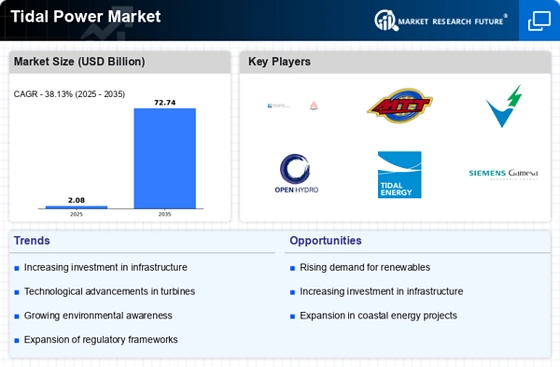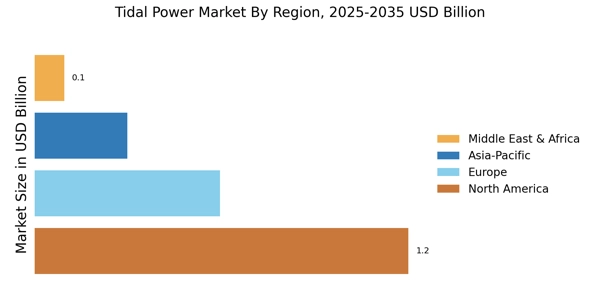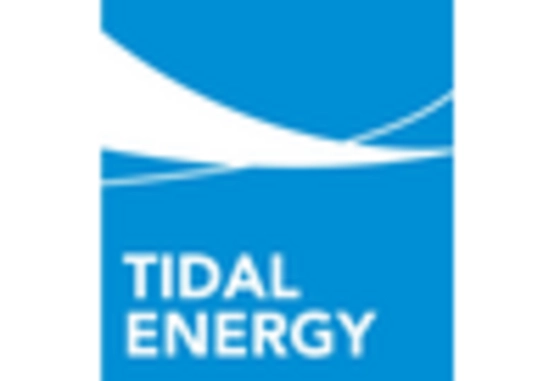Rising Energy Demand
The increasing The Tidal Power Industry. As populations grow and economies expand, the need for sustainable and reliable energy sources intensifies. Tidal power, with its predictable energy generation capabilities, offers a viable solution to meet this demand. According to recent estimates, energy consumption is projected to rise by approximately 30% by 2040. This surge in demand necessitates the exploration of alternative energy sources, including tidal energy, which can contribute significantly to the energy mix. The Tidal Power Market is poised to benefit from this trend, as governments and private sectors seek to diversify their energy portfolios and reduce reliance on fossil fuels.
Technological Innovations
Technological advancements play a crucial role in shaping the Tidal Power Market. Innovations in turbine design, energy conversion systems, and underwater infrastructure are enhancing the efficiency and feasibility of tidal energy projects. For instance, the development of more efficient tidal turbines has the potential to increase energy output while reducing costs. Recent studies suggest that advancements in energy storage solutions could further bolster the viability of tidal power by addressing intermittency issues. As technology continues to evolve, the Tidal Power Market is expected to witness increased adoption and integration into existing energy systems, making it a more attractive option for energy producers.
Investment in Renewable Energy
Investment trends indicate a growing commitment to renewable energy sources, which significantly impacts the Tidal Power Market. Financial institutions and governments are increasingly channeling funds into renewable projects, with tidal energy being a focal point due to its potential for consistent energy generation. In 2023, investments in renewable energy reached over 500 billion dollars, with tidal energy projects receiving a notable share. This influx of capital not only supports the development of new tidal power plants but also enhances research and development efforts aimed at improving technology and efficiency. As investment continues to flow into the Tidal Power Market, it is likely to accelerate growth and innovation.
Environmental Sustainability Goals
The increasing emphasis on environmental sustainability is a significant driver for the Tidal Power Market. As climate change concerns escalate, there is a pressing need for clean energy solutions that minimize ecological impact. Tidal power is recognized for its low carbon footprint and minimal environmental disruption compared to traditional energy sources. Many countries are setting stringent emissions reduction targets, which necessitate a shift towards renewable energy sources, including tidal energy. The Tidal Power Market stands to gain from this trend, as stakeholders seek to align their energy strategies with sustainability goals, thereby enhancing the appeal of tidal energy as a viable alternative.
Government Policies and Incentives
Supportive government policies and incentives are pivotal in driving the Tidal Power Market. Many countries are implementing frameworks that promote renewable energy development, including tidal power. These policies often include tax incentives, grants, and subsidies aimed at reducing the financial burden of establishing tidal energy projects. For example, several nations have set ambitious renewable energy targets, which necessitate the inclusion of tidal energy in their energy strategies. As governments recognize the importance of transitioning to sustainable energy sources, the Tidal Power Market is likely to experience accelerated growth due to favorable regulatory environments.


















Leave a Comment